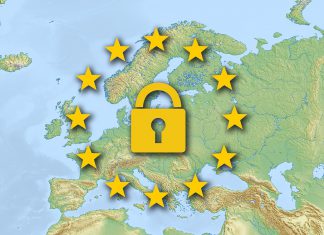With the ever-emerging organizational risks, boards are constantly on the lookout for ways to mitigate threats. These include areas like ESG, cyber resilience, human capital management, and even the personal liability of directors.
Diligent, a world leading GRC platform, recently delved into how companies can embrace technology to improve their auditing capabilities.
The audit committee, armed with an understanding of intricate issues, steps up to address these challenges. This entails offering robust financial and compliance support. With this evolving role, there’s an inherent need for the internal audit team and the Chief Audit Executive (CAE) to adapt. To meet the audit committee’s requirements, they must present clear, instantaneous insights for confident evaluations.
No longer is the internal audit just about compliance, Diligent said. Modern boards seek strategic insights from internal audit leaders – insights that delve deep into risks, potential revenue, and overall company performance. Many CAEs are more than willing to rise to the occasion. However, this strategic shift introduces three primary challenges:
- Expanding responsibilities: Modern boards are increasingly leaning on internal audit for insights on emerging demands. As an example, 90% of CAEs are now focusing on ESG principles. A significant number also see climate and sustainability as key focus areas. Couple this with evolving regulations like the SEC’s impending rules on climate and cyber disclosures, and the challenges multiply. This shift from being mere compliance reporters to proactive advisors intensifies the importance of each audit outcome.
- Need for speed and agility: The business landscape is rapidly evolving, necessitating agile audit teams that can keep pace. Reviews by internal audit teams are becoming more frequent, with KPMG’s findings highlighting that 60% of these teams now conduct risk evaluations at least semi-annually, if not more regularly. As traditional annual audits give way to continuous risk assessments, leaders must ensure real-time visibility across all risk aspects.
- Delivering more with limited resources: While the scope of internal audit expands, budgets and staffing often remain unchanged. This puts them under pressure to enhance accountability, give meaningful insights on ESG, keep up with the increasing regulations, and manage compliance costs. Boards expect the internal audit to back accelerated innovation, stay ahead of market disruptions, handle cyber risks, and tighten up amid economic uncertainties. In essence, the audit teams must maximise value within a constrained timeframe.
So, how can technology aid these agile internal audit teams? Most internal audit leaders are turning to technology to efficiently meet these rising demands. A KPMG study affirmed that tech remains a top investment area for internal audit. Here’s how next-gen audit technology can be a game-changer:
- Centralisation: Only about one-third of CAEs feel they possess all the necessary information for drawing accurate insights. The key is to modernise audit infrastructure by incorporating a platform that offers a single, unified data source. This centralisation aids audit teams in managing audit programs, storing all essential documentation, and executing planning seamlessly.
- Automation: With centralisation in place, the next step is automation. Modern audit platforms employ AI and ML to introduce automated workflows, which include standard templates, easily deployable questionnaires, and efficient audit planning tools.
- Visibility: Audit leaders must have a grasp on key performance indicators (KPIs) and budding risks. Tech-enabled audit platforms blend centralisation, automation, and analytics to offer AI-driven audit dashboards and real-time reporting tools.
- Continuous assurance: A crucial shift in the audit’s strategic role is the board’s anticipation for internal audit to report on identified risks and measure progress in addressing these issues.
As internal audit gains prominence and adopts a more strategic role in guiding the board, the expectations soar. The solution doesn’t solely lie in technology. Internal audit leaders must introspect and build robust relationships with stakeholders for efficient cross-functional workflows. However, modern audit technologies undeniably provide the enhanced reporting and streamlined processes required for internal audit teams to fulfil rising expectations and strengthen their strategic position.
By proactively embracing these technologies, internal audit leaders can present the invaluable insights that audit committees seek, thereby building trust and confidence among board members and stakeholders.
On a related note, Diligent’s forthcoming Modern Governance Summit (MGS) promises enlightening sessions on tech-enabled audit for the contemporary enterprise. The breakout session titled “Audit Committee & Leadership Reporting” is particularly noteworthy, featuring veteran audit leaders discussing evolving expectations and how they utilise Diligent HighBond to meet these challenges.
Read the full story here.
Keep up with all the latest FinTech news here
Copyright © 2023 RegTech Analyst
Copyright © 2018 RegTech Analyst






